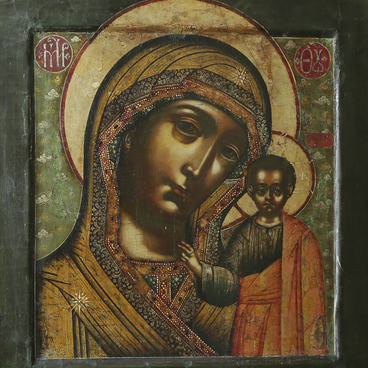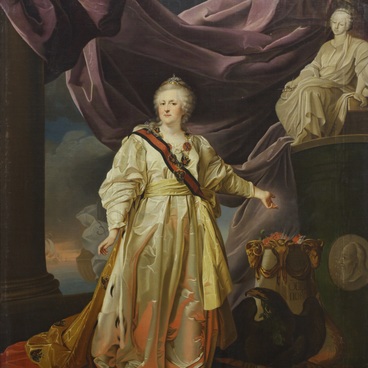The name of the icon Burning Bush ascends to the Old Testament story of the bush where God made Himself present to Moses. In the Biblical narrative, the bush was on fire but did not burn up.
Burning Bush
Creation period
the late 19th century
Dimensions
38,5x30 cm
Technique
levkas and tempera on wood
Collection
2
Open in app#10
#11
‘Now Moses was shepherding the flock of his father-in-law Jethro, the priest of Midian, and he led the flock to the far side of the desert and came to the mountain of God, to Horeb. The angel of the Lord appeared to him in a flame of fire from within a bush. He looked — and the bush was ablaze with fire, but it was not being consumed! ’
The Book of Exodus, Chapter 3
#13
An icon by such name is a symbol of the Immaculate Conception. As the bush on fire is not consumed so does the Virgin remain the Most Holy Mother of God. According to another interpretation, the Mother of God despite of having been born on earth remained pure and free from sin.
The early versions of the icon up to the 16th century interpreted the Old Testament almost literally. The Virgin Mary and the Child were shown in the flame of the burning bush with Moses kneeling before them.
Starting from the 17th century, icon painters depicted the Virgin Mary in the image of the Most Holy Mother of God surrounded by the Angels. On the icon from the collection of the Primorye Picture Gallery, the Virgin with the Child is painted in the centre in the Hodegetria tradition. The icons of that type depicted Christ in the Virgin Mary’s arms in full face with His right hand held up in blessing. Typically, the Hodegetria icons show the Mother of God at half length. However, some icons only depict her head and shoulders, or even full length
This icon from the Gallery’s collection may be classified as the Old-Rite one. The red rays show the symbols of the Saint Evangelists from the Book of Revelation, a final book of the Christian Bible prophesying the Judgement Day. St Mark is typically portrayed as a lion, St. Luke as a bull, St. John as an eagle, and St. Matthew as an angel. In 1722, the Holy Synod by its decree forbade to depict the Evangelists in the form of animals.
When an old-rite icon was commissioned by a family, then such icon would traditionally show the Guardian Angels with the names of the family members. The belief was that the patron saints could help in worldly matters. The Burning Bush icon was venerated as the protectress from the elements, the fire and thunder.
The early versions of the icon up to the 16th century interpreted the Old Testament almost literally. The Virgin Mary and the Child were shown in the flame of the burning bush with Moses kneeling before them.
Starting from the 17th century, icon painters depicted the Virgin Mary in the image of the Most Holy Mother of God surrounded by the Angels. On the icon from the collection of the Primorye Picture Gallery, the Virgin with the Child is painted in the centre in the Hodegetria tradition. The icons of that type depicted Christ in the Virgin Mary’s arms in full face with His right hand held up in blessing. Typically, the Hodegetria icons show the Mother of God at half length. However, some icons only depict her head and shoulders, or even full length
This icon from the Gallery’s collection may be classified as the Old-Rite one. The red rays show the symbols of the Saint Evangelists from the Book of Revelation, a final book of the Christian Bible prophesying the Judgement Day. St Mark is typically portrayed as a lion, St. Luke as a bull, St. John as an eagle, and St. Matthew as an angel. In 1722, the Holy Synod by its decree forbade to depict the Evangelists in the form of animals.
When an old-rite icon was commissioned by a family, then such icon would traditionally show the Guardian Angels with the names of the family members. The belief was that the patron saints could help in worldly matters. The Burning Bush icon was venerated as the protectress from the elements, the fire and thunder.
#14
Ministry of Culture of the Russian Federation
read morehide
00:00
00:00
1x
Burning Bush
Creation period
the late 19th century
Dimensions
38,5x30 cm
Technique
levkas and tempera on wood
Collection
2
Open in app
Share



